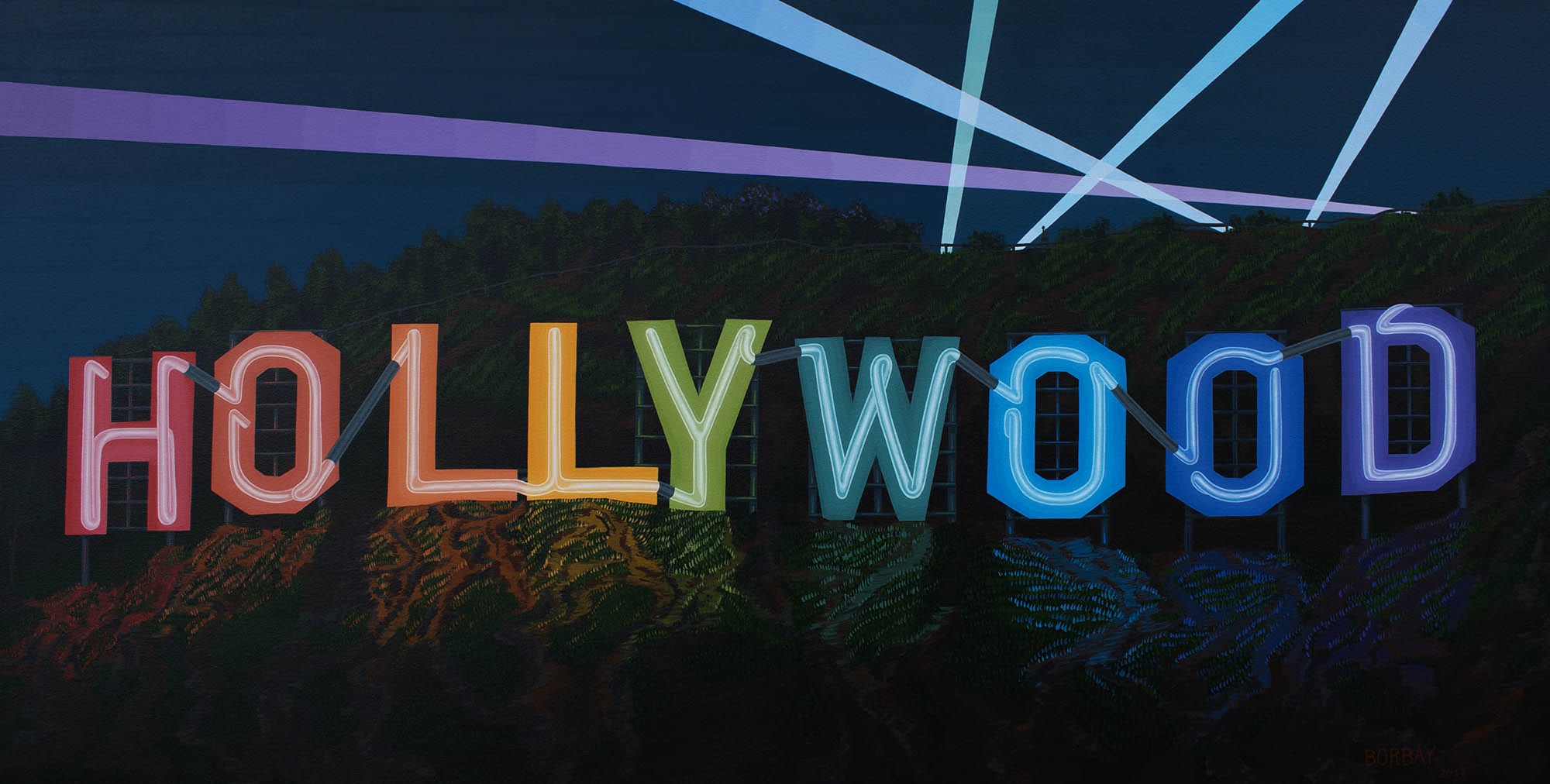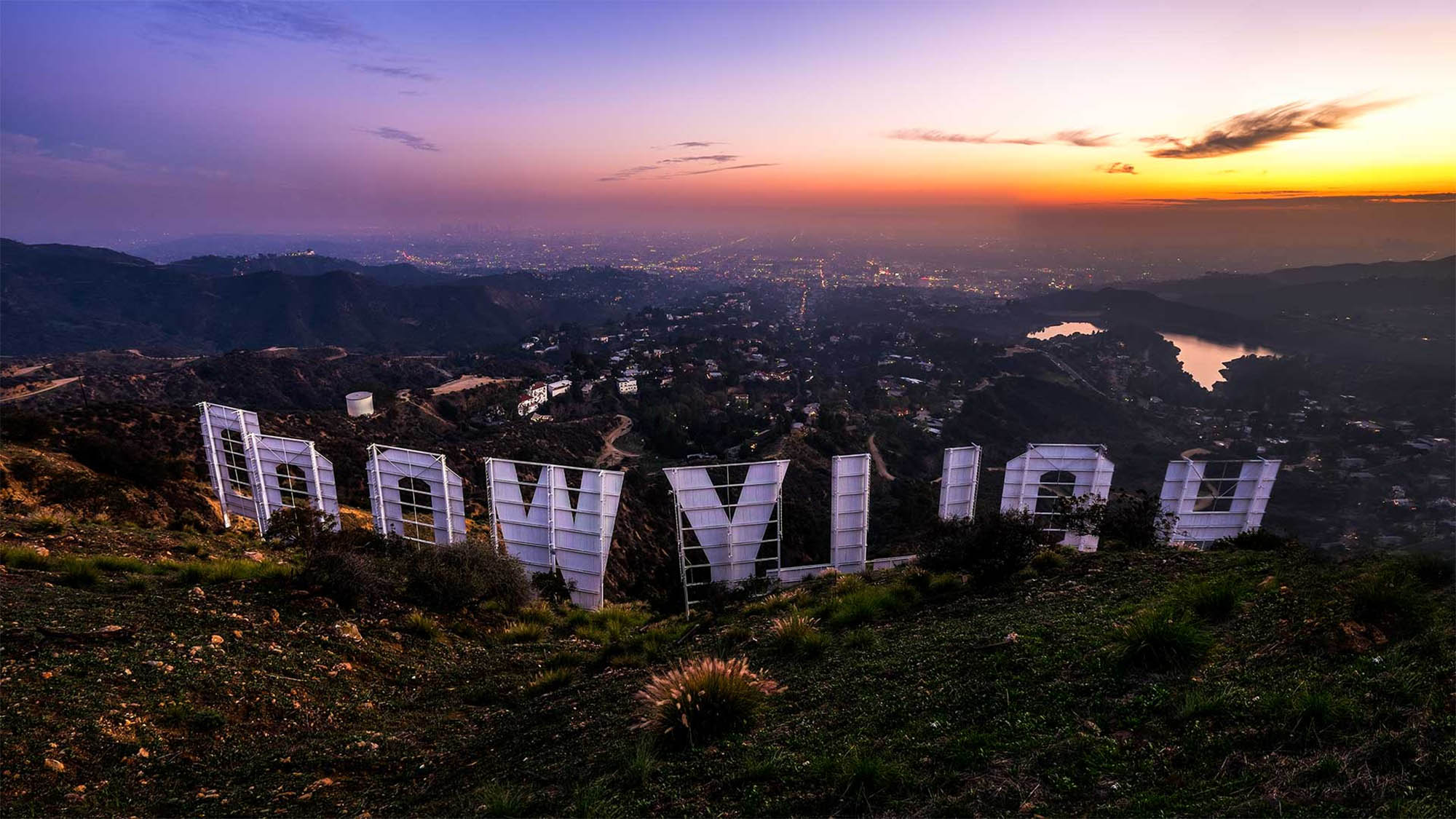
Location, location, location: Why Hollywood is a state of mind
Fleeing to pastures new
Since the turn of the 20th century, Hollywood has had a profound effect on cinema. As the primary nexus of the US film industry, its major studios have been the source of the most commercially successful movies in the world.
However, as is the case with many traditional industries, a change was long overdue and in the past several years, we’ve seen a steady diminishment in the old order of Hollywood; the old guard is being flushed out by LA’s pricey filming costs, causing productions to flee overseas where the incentives are far more appealing.

This week, The Hollywood Reporter pointed out that Solo: A Star Wars Story and other major productions are now shooting overseas, capitalizing on the film-friendly corners of the world. In addition to Morocco and Canada, Warner Bros.’ superhero flick Aquaman chose to set up camp in Australia.
Universal’s Jurassic World: Fallen Kingdom shot in the UK and Hawaii, Paramount’s Mission: Impossible – Fallout chose European locations including France and Norway, while the team behind Disney’s Solo: A Star Wars Story filmed at locations including the UK, Spain, Italy, and the Canary Islands.

“Blockbusters are increasingly becoming globetrotters: Of the top 100 box office films in 2013, about one-third shot internationally — in 2016 that rose to almost half,” wrote The Hollywood Reporter.
Life in Hollywood has become too expensive – from housing costs to hiring talent to renting out studio spaces – and therefore studios have been lured out of Hollywood to practice geographic arbitrage in offshore locations due to the various financial and logistical incentives.

See ya, Hollywood!
FilmToolKit Production Assistant and Lead Writer Sean Baran suggested the city is on a downward turn as it becomes less financially viable for filmmakers to stay put. “I have seen many film crew colleagues of mine making a decision to leave LA for places like Atlanta, where there has been explosive growth in recent years.”
This is primarily due to studios spaces and outdoor locations with cheaper rates. For example, Georgia offers a production cost tax credit of up to thirty percent. In other words, it pays to go down South. Similarly, Rhode Island – being a short drive from New York – lures producers with a 25% transferable tax credit on qualified spend.

That’s perhaps why many projects have been filmed there in recent years, including Hand Made, The Outsider, The Discovery, and The Purge: Election Year.
Alabama offers a generous 35% tax incentive, drawing in productions such as Trading Paint, Let There Be Light, Get Out, and Almost Christmas. Jumanji: Welcome to the Jungle, Jurassic World, and Kong: Skull Island chose Hawaii due to its stunning landscapes and 20-25% tax credits, while Virginia will play host to the forthcoming production of Wonder Woman 2, having already seen projects like Mindhunter, Jason Bourne, and The Glass Castle, to name a few.

The benefits of globetrotting
Overseas, a similar story is unfolding. Vancouver, British Columbia has been living up to the title “Hollywood North”. While the Canadian city has long been favored as a film & TV production haven for its relative proximity to LA, solid crews, and stunning locations, tax incentives are what have really been drawing in production companies in the last year.
This has been so effective that filmmakers are now trickling into the rest of British Columbia as Vancouver approaches capacity. BC offers additional monetary benefits to offset the price of transport and accommodation.

As such, Vancouver has been a popular destination for CW’s slate of superhero shows such as Supergirl and The Flash, as well as for films like Deadpool, Deadpool 2, and the Predator sequel. For US studios, geographic arbitrage is beneficial in countries such as Canada.
Robert Wong – acting film commissioner of British Columbia and Vice President of Creative BC – explained, “They know they can come here for great value, great exchange rate, and get triple-A production value.”

Studios have also been taking their productions down under; location options, experienced crews, established studios, and generous incentives have helped turn Australia into a hotspot for filming. Some of the major productions to have shot in the country in recent years include Mad Max: Fury Road, Unbroken, Gravity, The Great Gatsby, Ted, The Hunger Games, and The Avengers.
Similar to the aforementioned alternative locations, there are attractive monetary incentives drawing feature productions in. In February, the Australian state’s South Australian Film Corporation (SAFC) launched a new 10% rebate that covers all forms of post-production, including digital and visual effects work. The rebate is added on top of Australia’s federal incentive to provide a total return of up to 40% on post and related work undertaken in the state.

Eurotrip
While recent figures show filming in Tinseltown hit a five-year low in 2017, on the other side of the pond, a rather different story is unfolding. Data from the British Film Institute has shown the UK had a banner year in 2017 for film & TV production, where spending hit a record of nearly $4 billion – an 11% increase from the previous year.
Recent productions have included The Last Jedi, Beauty and the Beast, Dunkirk, Paddington 2, and Trainspotting 2. Meanwhile, major TV shows such as Philip K. Dick’s Electric Dreams, Game of Thrones, and The Crown filmed in the UK.
Why are production companies flocking to Blighty? It’s a similar story to Australia and Canada – the British government’s minister for digital and the creative industries Margot James cited world-class studios, a talented workforce, and (perhaps most importantly) highly competitive tax reliefs. While the UK is an expensive country to rent and spend, after weighing up the benefits, it’s still far more financially viable than filming in LA.

Czech Republic has also joined the incentives race to nab its share of the movie-making business; for filmmakers looking for a location that has both natural beauty and urban areas, the country offers many ideal landscapes and cityscapes. It also boasts multiple financial incentives, including a 20% rebate on qualifying spend (not to mention comparatively low living and rental costs).
Prague Studios US Representative Tomas Krejci told Film Daily about the many major productions that have come through its doors, including Hellboy, Blade II, Van Helsing, AVP: Alien vs. Predator, Wanted – the list goes on.
When discussing filming in LA, Krejci mused that while the city can’t erase its Hollywood history, “LA is expensive and there are obvious economic advantages to shooting in other parts of the world. There has very rarely been a film concept that actually had the funding to support the director’s vision in its entirety. The reach always exceeds the grasp in art.

But if the story needs an army of soldiers running up the hill, you can get one hundred times more soldiers in places like the Czech Republic. It’s more bang for your buck.” And the benefits work both ways, for the Czech Republic and the other countries offering tax incentives – the studios pump money into the economy.
Last year, Spain suddenly upped its tax incentives for film & TV too, a move which boosted the consolidation of the Canary Islands as one of the most attractive filming spots in Europe. As mentioned, Solo: A Star Wars Story chose the European islands as one of its various filming locations.
Not only is spending on housing and staff considerably less than in LA, but the Canary Islands are home to some of the most stunning natural landscapes in the world, and the government decided to invest in the cinematic potential of the Canary Islands by increasing the 35% tax rebate to 40%.

As is the case with many of these hotspots, the number of filmmakers fleeing to pastures new is evident in the figures: in the Canary Islands alone, the number of major productions jumped from around ten in 2013 to over thirty in 2017.
Coordinator of Canary Island Film at the Audiovisual Department of the Canary Islands Natacha Mora announced, “Our tax incentives include a 40% tax rebate for foreign production, 45%-40% tax credit for national production or co-productions, and 4% corporate income tax.
Meanwhile, our location is like a continent in miniature: we have the best weather in the world, more than 4000 hours of natural sunlight per year; we have excellent connections, experience, and crew; and this is a European region, meaning it is safe in juridical and health terms.”

Hollywood is a state of mind
There are many additional locations welcoming an expanding number of production companies seeking benefits outside of the Hollywood bubble – countries such as Hungary, Ireland, Colombia, Austria, China, Estonia, Belgium, Iceland, and New Zealand, to name a few.
Shooting features and shows outside of LA has become the new norm for studios and producers, and the situation has accelerated in the past five years as competition for production widens throughout the world.

While many of Hollywood’s bigwigs cling onto the idea that Hollywood can’t be replaced, the numbers would show otherwise. A recent study showed filmmaking figures in LA have hit a five-year low despite the $330 million in annual tax incentives offered by the state. It’s simply becoming less and less economically viable for productions to stay put when there are other regions or countries offering cheaper living costs and higher tax incentives.
This is a mass exodus. The question now remains: how (or should we say will) Hollywood find a way to draw its filmmakers back in? For now, the growing number of production teams leaving the City of Angels for new pastures are in agreement – the grass really is greener on the other side.



